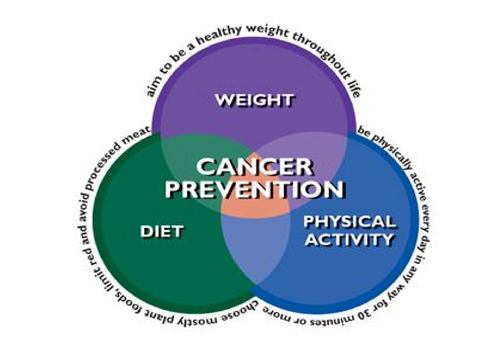Stigmatization due to overweight and obesity
Stigmatization due to overweight and obesity: The effects it has on both genders

Stigmatization due to overweight and obesity is not a fiction any more. Many obese people are suffering a lot in the hands of those who are suppose to help them like doctors, teachers, parents and employers
Overweight people are in many situations often finds themselves on the receiving end due to a range of reasons. Besides the possible health complications that come with being overweight and obese, these individuals often becomes the subject of ridicule, discrimination and other acts that can only be considered to be inhumane. It is a pity that this is happening in this twenty first century despite the public awareness that obesity and overweight are diseases like any other which needs medical attention. While attending one of the conferences organized by doctor Dalal Akoury (MD) and founder of AWAREmed Health and Wellness Resource Center. She was very categorical that stigmatization due to overweight and obesity is becoming a global problem with US being on the list of states that leads in this uncalled for behavior. In her speech she wondered why this is happening and I believe that your conscious is not clear about the same and you are wondering too. Because of that, we are going to discuss some of the effects of this heinous behavior and also offer some working solution that we believe will be very helpful to you. We want therefore appeal to you passionately to keep reading and be the first to know the modalities of addressing such situations.
The element of stigmatization is deeply rooted in some communities to the effect that people who are struggling with excess weight or obesity are under serious pressure from their molesters and the experience of discrimination is across a wide variety of settings, including healthcare, employment, schools, public transport sector, social amenities joints and interpersonal relationships. Our children are bullied in school and their performance is deteriorating in the process. Employers are not keen on giving opportunities to obese individuals thereby causing some people their only source of livelihoods. We will look at some of these in details as we progress into the discussion and this is something you don’t want to miss. Therefore stay with us on the link and where possible invite a friend to spread the scope of our resolve to create more awareness to the public that stigmatization due to overweight and obesity is a serious crime to social justice.
Stigmatization due to overweight and obesity: Social discrimination
We have just mentioned something about job opportunities and for sure this is one area which needs to be focused on very objectively. Many employers are shying from offering job opportunities to people who are overweight for fear that they may not be active enough to deliver on their assignment. This discrimination does not stop there; even those that are already in the employment often find themselves being left out when promotion opportunities are advertised. Such opportunities are almost like a reserve to their lean colleagues. As if that is not enough some employers go further to frustrate them by low remuneration siting nonperformance and increased risk of job insecurity just because of their weight.
In healthcare settings, patients affected by obesity often experience prejudice, apathy and lower quality of care from medical professionals, which may result in patients choosing to delay or forgo crucial preventative care to avoid additional humiliation.
Students also face weight-based victimization in educational institutions from their peers, teachers and even parents, this affects the adversely in nearly all the sectors of their life including the interference with their social support and educational achievement. Besides all these it is also emerging that weight related stigma is also present in interpersonal relationships with friends, family and romantic partners, such that negative judgment invades almost all areas of the lives of people affected by obesity.
Stigmatization due to overweight and obesity: Gender differences in experiences of weight stigma
Although both men and women are vulnerable to weight discrimination, their experiences may differ with respect to how much discrimination they are exposed to and the forms that it takes. Most notably, women seem to experience higher levels of weight stigmatization than men, even at lower levels of excess weight. Research suggests that women, especially those who are middle aged or with lower levels of education, experience weight discrimination at significantly higher rates than male peers. Moreover, women report weight discrimination at lower levels of excess weight than men. For example, men tend to report considerable stigmatization at a Body Mass Index (BMI) of 35 or higher, whereas women report experiencing notable increases in weight discrimination at a lower BMI of only 27.
North American ideals of physical attractiveness, which emphasize thinness as central to feminine beauty, may account for some of these differences. Women whose bodies deviate, even slightly, from physical beauty standards may be vulnerable to weight stigmatization. Given that thinness ideals have become deeply ingrained into our society and are heavily promoted by the mass media, diet industry and fashion industry, it’s not surprising to see widespread weight stigmatization toward women, even if they are not “obese.”
For women, weight discrimination has been associated with poorer body image, low self-esteem, depression, anxiety, and a range of unhealthy eating behaviors, including binge eating.
Stigmatization due to overweight and obesity: Gender differences in children and adolescents
Young people are vulnerable to the negative social and emotional consequences of obesity. The magnitude of stigmatization always takes the shape of bullying and victimization which impacts adversely on their relationships, education and occasionally on their physical health. There has been an inconsistency in research findings to gender with some studies establishing that girls experience more weight-based victimization, reporting higher levels of teasing and being assigned more negative characteristics as a result of their weight than boys. Other research, however, has failed to find sex differences in vulnerabilities. It may be that differences are more apparent in the types of stigmatization experienced by boys and girls, rather than the quantity or amount of these experiences.
For instance weight-based bullying may be more predominant among boys who are affected by excess weight while girls may experience more weight-based victimization in the form of social exclusion from their peers.
As I had indicated above boys and girls who experience weight-based victimization are at increased risk for negative social and educational outcomes, however, these risks seem to be even more identical with girls who are overweight, display lower academic self-esteem and are significantly more likely to be held back a grade than boys. Girls are also more likely to experience negative psychological outcomes, like depression in response to experiences of weight victimization, and may endure more pronounced difficulties in interpersonal relationships with peers and dating partners in adolescence.
Research shows that adolescent and young adult women who are affected by excess weight have lower potential for romantic relationships compared to their non-overweight peers. However, for young men, being affected by excess weight may not be detrimental to dating and forming romantic relationships. In fact, it may even be associated with positive and desirable characteristics like strength and masculinity.
Finally the content of this article is not conclusive and certainly further studies are necessary to unlock and comprehend the nature and extent of gender differences in experiences of weight stigmatization. Even though it may appear for now that some differences may exist and more so ladies may have increased vulnerability in some areas compared to men. These are very useful tips which should be known by the various sector e.g. employers, learning institutions to help them intervene and bring this madness of weight stigmatization to a manageable levels. Doing all these may necessitate that you seek well guided professional advice from an experienced expert. These services are available at AWAREmed Health and Wellness Resource Center a facility founded by Doctor Akoury who is an expert in this line of obesity and has been helping people regain their lives back for the last two decades through a painless process by focusing on Neuroendocrine Restoration (NER) to reinstate normality through realization of the oneness of Spirit, Mind, and Body, Unifying the threesome into ONE. Calling doctor Akoury will be very helpful for you to sort out all your questions relating to weight gain and obesity in all aspect.
Stigmatization due to overweight and obesity: The effects it has on both genders


